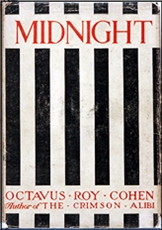A 1001 MIDNIGHTS Review by Max Allan Collins:

RICHARD STARK – The Hunter.
Pocket Books, paperback original, 1962. British title: Point Blank. Coronet, ppbk, 1967. Reprint editions include: Gold Medal, pb, ca.1967; and Berkley, pb, 1973, both as Point Blank; Avon, pb, 1984; Univ. of Chicago Press, trade pb, 2008. Film: MGM, 1967, as Point Blank (scw: Alexander Jacobs, David Newhouse, Rafe Newhouse; dir: John Boorman). Film: Paramount, 1999, as Payback (scw: Brian Helgeland, Terry Hayes; dir: Helgeland).
Although one of the most influential series of the Sixties and Seventies, the Parker novels have never really been a huge popular success in the United States. They have shuttled from one publisher to another, while gaining critical acclaim and cult status, selling handsomely in foreign editions, and generating six motion pictures — the income from which no doubt justified the effort put into the books by an author who is finally coming to be viewed as one of the major figures of the twentieth-century mystery.
The impact Parker has had on the tough crime novel can be gauged by a sub-genre Stark has virtually invented: the so-called crook book. Prior to Stark, only Robin Hood thieves like Raffles or the Saint had taken center stage in series fiction; and W. R. Burnett — in whose path Stark most clearly treads — did not write series fiction about his amoral antiheroes.

Parker’s recorded adventures begin in The Hunter (sometimes republished as Point Blank, the title of the stylish 1967 John Boorman-directed movie version with Lee Marvin and Angie Dickinson).
Betrayed and left for dead on a heist by his wife, Lynn, and his friend Mal Resnick, Parker returns with a single-minded mission: to get the $45,000 due him. He first contacts his remorseful wife (who describes herself as a “Judas ewe”) and, without really intending to, intimidates her into suicide. When he finally corners Resnick, now employed by the mob, he finds Resnick has turned the money over to his “Outfit” bosses.
With a sense of logic unique to him, Parker forces Mal to tell him the names and whereabouts of the various mob bosses, then strangles him and sets about getting his money back from the mob. What begins as a personal vendetta — which Parker cloaks in the practical consideration of getting his money back (it is characteristic of him to bury his emotions, his humanity turns into a darkly humorous tale of one man battling an organization.

Parker is a self-sufficient, single-minded loner out of an earlier, wilder America; the soft, big-business boys don’t stand a chance against him.
Richard Stark’s prose is as straightforward and matter-of-fact effective as Parker himself. His narrative structure, here and in the other Parker novels, is not so straightforward: Working in the third person, it is Stark’s method to follow the initial Parker-point-of-view section of the book with a section that shifts to Parker’s antagonist’s point of view (or, in later novels, the points of view of various characters, including antagonists), and then, finally, shift back to Parker’s viewpoint.
Events are often seen more than once, from varying perspectives, moving back and forth in time, creating a sense of inevitability where Parker’s Frankenstein-monster forward momentum is concerned.
The Parker series is one of the most evenly written in crime fiction; the sixteen novels are consistently well done and readable. If forced, one might point out Plunder Squad (1972) as a somewhat perfunctory Parker, and Deadly Edge (1971) as a particularly fine example.

Offbeat entries include The Jugger (1965), in which Parker plays detective: and Slayground (1971), a set piece in which Parker hides from and does battle with mob interlopers in an amusement park.
Parker has inspired two spin-offs: Grofield by Stark, and Dortmunder by Westlake. Actor Alan Grofield, whose first appearance was in the Parker novel The Score (1964), has appeared in four novels of his own: The Damsel (1967), The Dame (1969), The Blackbird (1969), and Lemons Never Lie (1971).
The first three resemble slightly straighter versions of Westlake’s famed comic crime novels and, in their foreign locales, prefigure his massive Kahawa (1982). Grofield seems a slightly different character in his solo novels, struggling to perform the role of protagonist and not sidekick; but the two personas converge in the Parker-like Lemons Never Lie.
Butcher’s Moon is a sequel to both the Parker entry, Slayground, and the Grofield entry, The Blackbird, which share nearly the same first chapters (detailing a botched armored-car job). The Dortmunder books are deadpan comedy versions of Parker capers: The first, The Hot Rock (1970), is a specific reworking of The Black Ice Score, and Grofield has a leading role.
Later, in Jimmy the Kid (1974), Dortmunder’s gang read and follow as a blueprint a nonexistent Parker novel entitled Child Heist; this nicely counterpoints the differences between the cute absurd world of Westlake/Dortmunder and the grim absurd one of Stark/Parker.
———
Reprinted with permission from 1001 Midnights, edited by Bill Pronzini & Marcia Muller and published by The Battered Silicon Dispatch Box, 2007. Copyright © 1986, 2007 by the Pronzini-Muller Family Trust.























